-
 Bitcoin
Bitcoin $115000
0.12% -
 Ethereum
Ethereum $3701
4.50% -
 XRP
XRP $3.081
2.99% -
 Tether USDt
Tether USDt $0.0000
-0.01% -
 BNB
BNB $767.9
1.45% -
 Solana
Solana $169.5
3.13% -
 USDC
USDC $0.9999
0.01% -
 Dogecoin
Dogecoin $0.2106
4.30% -
 TRON
TRON $0.3334
1.62% -
 Cardano
Cardano $0.7564
2.54% -
 Stellar
Stellar $0.4165
0.76% -
 Hyperliquid
Hyperliquid $38.75
0.25% -
 Sui
Sui $3.593
3.00% -
 Chainlink
Chainlink $17.08
3.59% -
 Bitcoin Cash
Bitcoin Cash $573.6
4.35% -
 Hedera
Hedera $0.2508
-0.84% -
 Avalanche
Avalanche $23.07
6.46% -
 Ethena USDe
Ethena USDe $1.001
-0.02% -
 Litecoin
Litecoin $120.8
8.17% -
 UNUS SED LEO
UNUS SED LEO $8.943
-0.32% -
 Toncoin
Toncoin $3.400
-5.60% -
 Shiba Inu
Shiba Inu $0.00001255
1.54% -
 Uniswap
Uniswap $9.908
6.32% -
 Polkadot
Polkadot $3.718
2.10% -
 Monero
Monero $303.0
-0.74% -
 Dai
Dai $0.9999
-0.02% -
 Bitget Token
Bitget Token $4.392
0.91% -
 Cronos
Cronos $0.1403
6.31% -
 Pepe
Pepe $0.00001076
1.13% -
 Aave
Aave $267.2
1.80%
What is a sidechain and how does it interact with the mainchain?
Sidechains, connected to mainchains via a two-way peg, enhance blockchain scalability and enable new features without altering the mainchain's protocol.
Apr 14, 2025 at 05:42 am
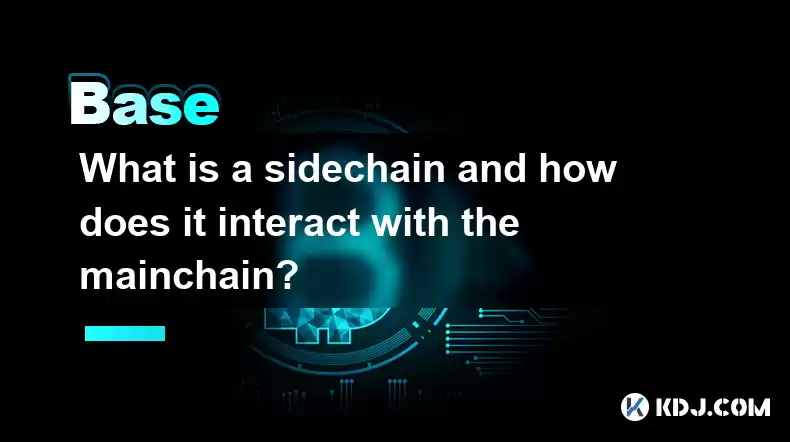
A sidechain is a separate blockchain that is attached to its parent blockchain, referred to as the mainchain, through a two-way peg. This mechanism allows assets to be securely moved between the mainchain and the sidechain. The concept of sidechains was introduced to increase blockchain scalability and enable the development of new features without altering the mainchain's protocol. In this article, we will explore the concept of sidechains, their interaction with the mainchain, and their applications within the cryptocurrency ecosystem.
What is a Sidechain?
A sidechain is an independent blockchain that runs parallel to the mainchain. It has its own consensus mechanism, block structure, and set of rules. The primary purpose of a sidechain is to offload some of the mainchain's workload, thereby improving its scalability and efficiency. Sidechains can also be used to test new features and functionalities without risking the stability of the mainchain.
Sidechains are connected to the mainchain through a two-way peg, which allows assets to be transferred between the two chains. When assets are moved from the mainchain to the sidechain, they are locked on the mainchain and an equivalent amount is released on the sidechain. Conversely, when assets are moved back to the mainchain, they are locked on the sidechain and released on the mainchain.
How Does a Sidechain Interact with the Mainchain?
The interaction between a sidechain and the mainchain is facilitated by the two-way peg mechanism. Here's how it works:
Locking Assets on the Mainchain: When a user wants to transfer assets from the mainchain to the sidechain, they initiate a transaction on the mainchain that locks the specified amount of assets. These assets are held in a special address on the mainchain and cannot be spent until they are unlocked.
Releasing Assets on the Sidechain: Once the assets are locked on the mainchain, an equivalent amount of assets is released on the sidechain. This process is typically managed by a federation or a smart contract that monitors the mainchain and releases the corresponding assets on the sidechain.
Locking Assets on the Sidechain: When a user wants to transfer assets back to the mainchain, they initiate a transaction on the sidechain that locks the specified amount of assets. These assets are held in a special address on the sidechain and cannot be spent until they are unlocked.
Releasing Assets on the Mainchain: Once the assets are locked on the sidechain, the equivalent amount of assets is released on the mainchain. This process is also managed by a federation or a smart contract that monitors the sidechain and releases the corresponding assets on the mainchain.
Benefits of Sidechains
Sidechains offer several benefits to the cryptocurrency ecosystem:
Scalability: By offloading some of the mainchain's workload, sidechains can help improve the overall scalability of the network. This is particularly important for blockchains like Bitcoin, which have limited transaction throughput.
Innovation: Sidechains provide a safe environment for developers to test new features and functionalities without risking the stability of the mainchain. This can lead to the development of new applications and use cases for cryptocurrencies.
Interoperability: Sidechains can facilitate interoperability between different blockchains. By connecting multiple sidechains to a mainchain, assets and data can be transferred between different blockchain networks.
Customization: Sidechains can be customized to meet specific needs and requirements. This allows developers to create specialized blockchains that are optimized for particular use cases.
Applications of Sidechains
Sidechains have a wide range of applications within the cryptocurrency ecosystem:
Token Issuance: Sidechains can be used to issue new tokens that are pegged to the mainchain's native cryptocurrency. This allows for the creation of new digital assets without the need to create a new blockchain from scratch.
Privacy and Confidentiality: Some sidechains are designed to enhance privacy and confidentiality. For example, the Liquid Network, a sidechain of Bitcoin, offers confidential transactions that hide the amount and type of assets being transferred.
Gaming and NFTs: Sidechains can be used to create specialized blockchains for gaming and non-fungible tokens (NFTs). These sidechains can be optimized for high transaction throughput and low latency, making them ideal for gaming applications.
Decentralized Finance (DeFi): Sidechains can be used to build decentralized finance applications that are not possible on the mainchain. For example, the RSK sidechain of Bitcoin enables smart contracts and DeFi applications on the Bitcoin network.
Examples of Sidechains
Several sidechains have been developed and are currently in use within the cryptocurrency ecosystem:
Liquid Network: The Liquid Network is a sidechain of Bitcoin that is designed for fast and secure transactions. It is used by exchanges and financial institutions to settle trades and move assets between different parties.
RSK: RSK is a sidechain of Bitcoin that enables smart contracts and decentralized applications. It is designed to bring Ethereum-like functionality to the Bitcoin network.
Polkadot Parachains: Polkadot is a multi-chain network that allows different blockchains to interoperate. The parachains of Polkadot can be considered sidechains that are connected to the main Polkadot relay chain.
Rootstock: Rootstock is another sidechain of Bitcoin that focuses on smart contracts and decentralized applications. It aims to bring the power of Ethereum to the Bitcoin network.
How to Use a Sidechain
Using a sidechain involves several steps, depending on the specific sidechain and its implementation. Here's a general guide on how to use a sidechain:
Choose a Sidechain: First, you need to choose a sidechain that meets your needs. Research different sidechains and their features to find the one that is best suited for your use case.
Set Up a Wallet: You will need a wallet that supports the sidechain you have chosen. Some sidechains have their own dedicated wallets, while others can be accessed through multi-asset wallets.
Transfer Assets to the Sidechain: To use the sidechain, you need to transfer assets from the mainchain to the sidechain. This involves locking assets on the mainchain and receiving an equivalent amount on the sidechain.
- Initiate a Transaction on the Mainchain: Use your wallet to send the desired amount of assets to the sidechain's locking address on the mainchain.
- Wait for Confirmation: Wait for the transaction to be confirmed on the mainchain. This may take several minutes, depending on the mainchain's block time.
- Receive Assets on the Sidechain: Once the transaction is confirmed, the equivalent amount of assets will be released on the sidechain. You can now use these assets on the sidechain.
Use the Sidechain: With assets on the sidechain, you can now use the sidechain's features and functionalities. This may include sending and receiving assets, using smart contracts, or participating in decentralized applications.
Transfer Assets Back to the Mainchain: When you want to move assets back to the mainchain, you need to lock assets on the sidechain and receive an equivalent amount on the mainchain.
- Initiate a Transaction on the Sidechain: Use your wallet to send the desired amount of assets to the sidechain's locking address on the sidechain.
- Wait for Confirmation: Wait for the transaction to be confirmed on the sidechain. This may take several minutes, depending on the sidechain's block time.
- Receive Assets on the Mainchain: Once the transaction is confirmed, the equivalent amount of assets will be released on the mainchain. You can now use these assets on the mainchain.
Frequently Asked Questions
Q: Can sidechains be used to increase the privacy of transactions on the mainchain?
A: Yes, some sidechains are designed to enhance privacy and confidentiality. For example, the Liquid Network, a sidechain of Bitcoin, offers confidential transactions that hide the amount and type of assets being transferred. By moving assets to such a sidechain, users can conduct private transactions that are not visible on the mainchain.
Q: Are sidechains secure?
A: The security of a sidechain depends on its design and implementation. Sidechains that use a federation or a smart contract to manage the two-way peg may be vulnerable to attacks if the federation or smart contract is compromised. However, many sidechains implement additional security measures, such as multi-signature wallets and time-locked transactions, to enhance their security.
Q: Can sidechains be used to create new cryptocurrencies?
A: Yes, sidechains can be used to issue new tokens that are pegged to the mainchain's native cryptocurrency. This allows for the creation of new digital assets without the need to create a new blockchain from scratch. However, the value and utility of these new tokens depend on their use case and adoption within the cryptocurrency ecosystem.
Q: How do sidechains affect the decentralization of the mainchain?
A: Sidechains can both enhance and challenge the decentralization of the mainchain. On one hand, sidechains can offload some of the mainchain's workload, reducing congestion and improving scalability. On the other hand, if a sidechain is managed by a centralized entity, such as a federation, it may introduce a point of centralization that could affect the overall decentralization of the network.
Disclaimer:info@kdj.com
The information provided is not trading advice. kdj.com does not assume any responsibility for any investments made based on the information provided in this article. Cryptocurrencies are highly volatile and it is highly recommended that you invest with caution after thorough research!
If you believe that the content used on this website infringes your copyright, please contact us immediately (info@kdj.com) and we will delete it promptly.
- Solana Memecoin Launchpads: A Wild Ride with LetsBONK.fun Leading the Charge
- 2025-08-05 17:30:12
- Crypto Volatility & Token Unlocks: Navigating the Storm
- 2025-08-05 16:30:13
- SUI Traders Eye Discount: Is Now the Time to Buy?
- 2025-08-05 16:30:13
- Bitcoin Price in August: Will the BTC Rally Continue?
- 2025-08-05 17:35:12
- Decentralized Perpetuals Soar: Volume Hits All-Time High, Leaving CEXs in the Dust?
- 2025-08-05 16:50:12
- Decoding MYCUSD: Crypto Forecasting for Digital Asset Success
- 2025-08-05 16:50:12
Related knowledge
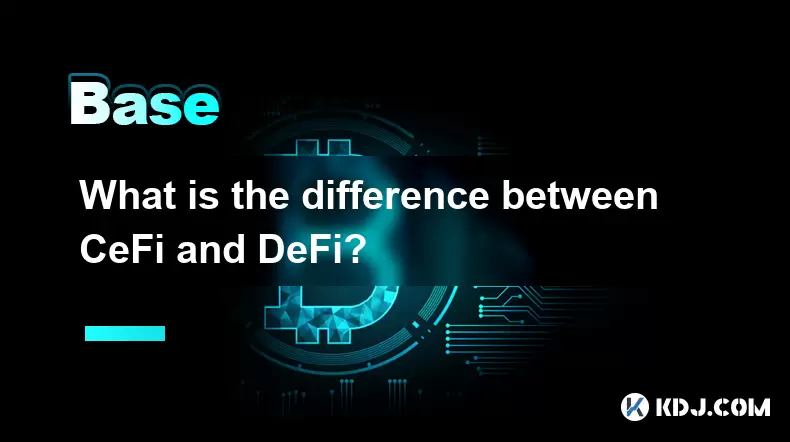
What is the difference between CeFi and DeFi?
Jul 22,2025 at 12:28am
Understanding CeFi and DeFiIn the world of cryptocurrency, CeFi (Centralized Finance) and DeFi (Decentralized Finance) represent two distinct financia...

How to qualify for potential crypto airdrops?
Jul 23,2025 at 06:49am
Understanding What Crypto Airdrops AreCrypto airdrops refer to the distribution of free tokens or coins to a large number of wallet addresses, often u...
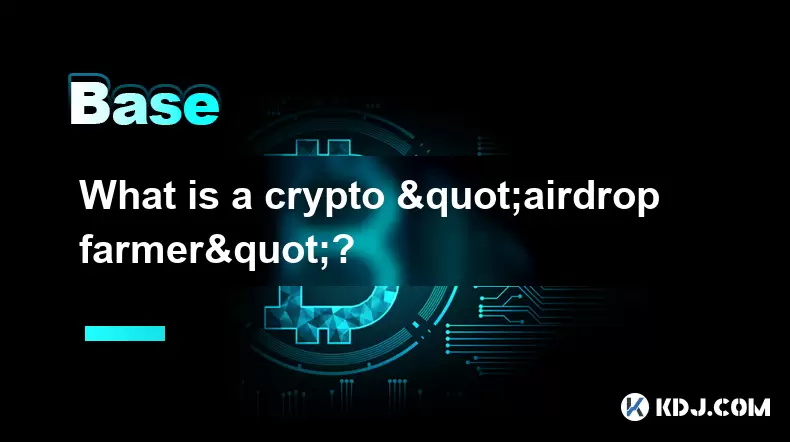
What is a crypto "airdrop farmer"?
Jul 24,2025 at 10:22pm
Understanding the Role of a Crypto 'Airdrop Farmer'A crypto 'airdrop farmer' refers to an individual who actively participates in cryptocurrency airdr...
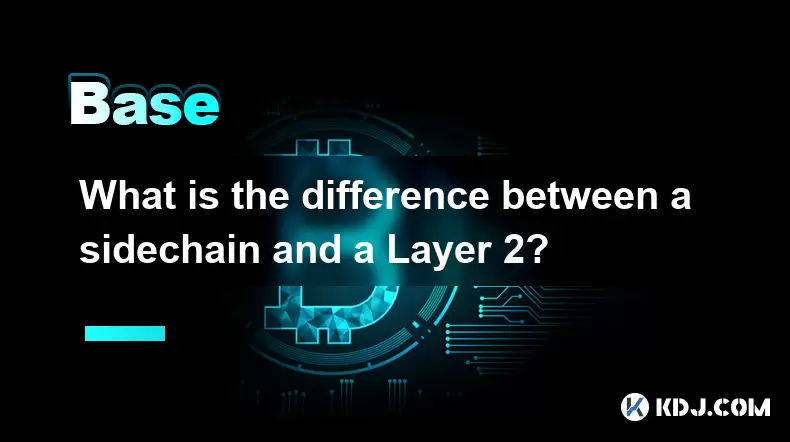
What is the difference between a sidechain and a Layer 2?
Jul 20,2025 at 11:35pm
Understanding the Concept of SidechainsA sidechain is a separate blockchain that runs parallel to the main blockchain, typically the mainnet of a cryp...
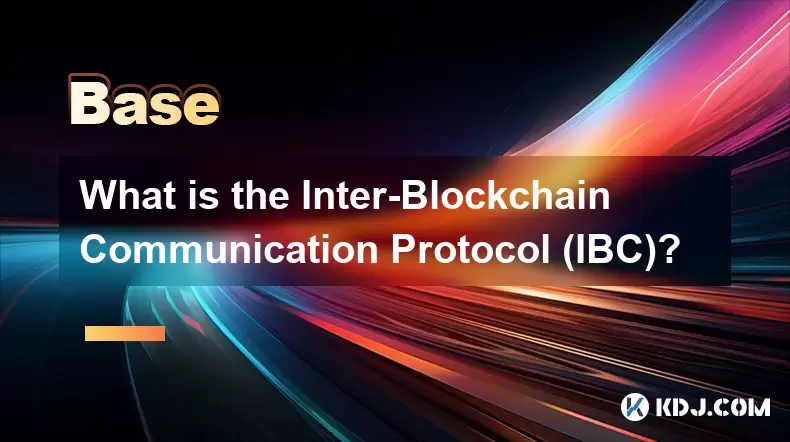
What is the Inter-Blockchain Communication Protocol (IBC)?
Jul 19,2025 at 10:43am
Understanding the Inter-Blockchain Communication Protocol (IBC)The Inter-Blockchain Communication Protocol (IBC) is a cross-chain communication protoc...
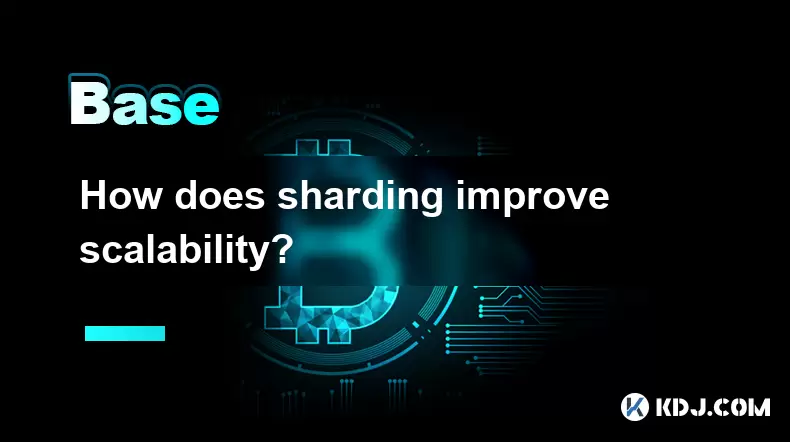
How does sharding improve scalability?
Jul 20,2025 at 01:21am
Understanding Sharding in BlockchainSharding is a database partitioning technique that is increasingly being adopted in blockchain technology to enhan...

What is the difference between CeFi and DeFi?
Jul 22,2025 at 12:28am
Understanding CeFi and DeFiIn the world of cryptocurrency, CeFi (Centralized Finance) and DeFi (Decentralized Finance) represent two distinct financia...

How to qualify for potential crypto airdrops?
Jul 23,2025 at 06:49am
Understanding What Crypto Airdrops AreCrypto airdrops refer to the distribution of free tokens or coins to a large number of wallet addresses, often u...

What is a crypto "airdrop farmer"?
Jul 24,2025 at 10:22pm
Understanding the Role of a Crypto 'Airdrop Farmer'A crypto 'airdrop farmer' refers to an individual who actively participates in cryptocurrency airdr...

What is the difference between a sidechain and a Layer 2?
Jul 20,2025 at 11:35pm
Understanding the Concept of SidechainsA sidechain is a separate blockchain that runs parallel to the main blockchain, typically the mainnet of a cryp...

What is the Inter-Blockchain Communication Protocol (IBC)?
Jul 19,2025 at 10:43am
Understanding the Inter-Blockchain Communication Protocol (IBC)The Inter-Blockchain Communication Protocol (IBC) is a cross-chain communication protoc...

How does sharding improve scalability?
Jul 20,2025 at 01:21am
Understanding Sharding in BlockchainSharding is a database partitioning technique that is increasingly being adopted in blockchain technology to enhan...
See all articles

























































































